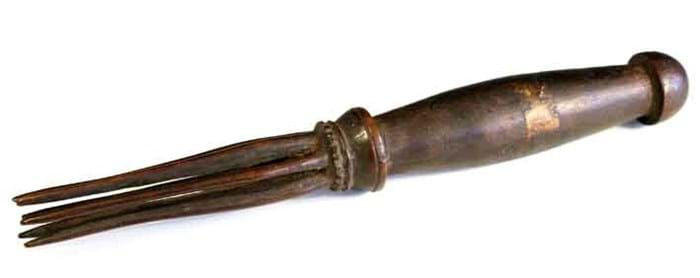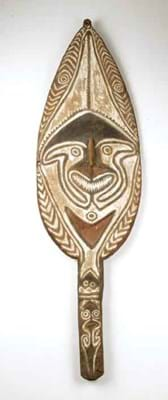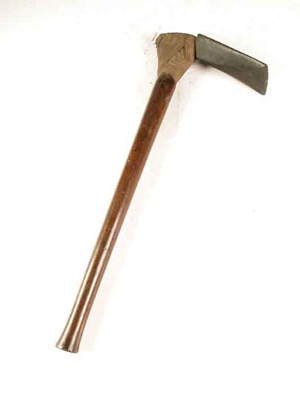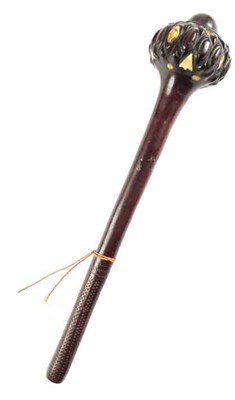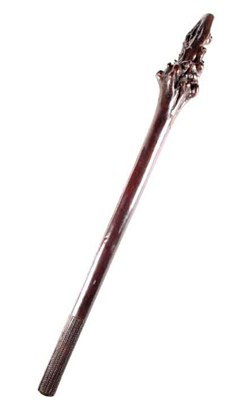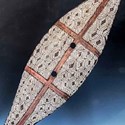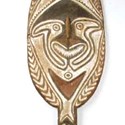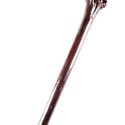Carved from a single piece of wood, the distinct elongated, convex shield is common to many Aboriginal groups in the south-east of Australia, used for hand-to-hand combat to deflect clubs or boomerangs.
This 2ft 10in (87cm) long example, possibly from the Murray River region in Victoria and New South Wales, was decorated with a repeating lozenge pattern highlighted with white clay divided into six segments by red ochre channels. The handle, made from a single piece of bent wood, would have been set into the central holes when the wood was green, although it is now missing.
Some very substantial sums have been paid at auction in recent years for the best decorated and most sculptural early-contact shields including the multi-estimate $95,000 (£63,350) bid at Christie's New York in May 2012 for the example from the collection of dealer Ernest Beyeler. Another sold for £30,000 at Golding Young & Mawer in August 2012.
Most go back Down Under and, whether on the telephone or online, bidders from Australia proved the strongest combatants in the battle for the shield at Martel Maides on June 26-27. It ultimately sold at £35,000.
Cannibal Fork
The Australian buyer of the shield was also the buyer of another 19th century Fiji Islands cannibal fork, consigned by a UK client who saw the publicity from the November sale. The vendor's father, a wood turner with an eye for tropical hardwood, had found it on a refuse tip in the 1960s.
This particular six-pronged fork (typically they were used to feed tribal chiefs or elders) measured 9½in (24cm) long and had traces of an old paper collection label to the barrel-shaped grip. It took £3200 (estimate £400-600).
Gope Board
Oceanic art was the strong suit of the 500-plus lot,£190,000 tribal offering that made up the second day of Woolley & Wallis' sale in Salisbury on July 2. A handful of lots from the region performed particularly well including a Papua New Guinea gope board that sold to an English agent for £9000 (estimate £300-400).
Standing an impressive 3ft 4in (1.03m) high and worked with ebonised red and white pigment, and pierced to the nose, this was part of a small collection from the north of England which included mainly African masks, collected over the years by a retired furniture dealer.
An Australian dealer again proved a strong buyer, taking both a 16in (41cm) long Fijian ula (thowing club) inlaid to the lobed head in bone with stars, beads, ovals and arrow heads (estimate £800-1200) and a 4ft (1.21m) Fijian vanikau (rootstock club) inlaid with four teeth and marine ivory discs and incised with zig-zag patterns (estimate £2000-3000). The ula, a family heirloom, sold at £9200. The vanikau, given to the Volks Museum in Pretoria by a Cape Town seafaring family in the early 1900s, took £7800.
A 2ft 1in (62cm) Polynesian adze, with a wood shaft and a faceted black stone blade with plaited coir, was from the estate of a furniture dealer. Possibly from the Cook Islands, it was bought by the Paris trade at £7000 (estimate £400-500).


